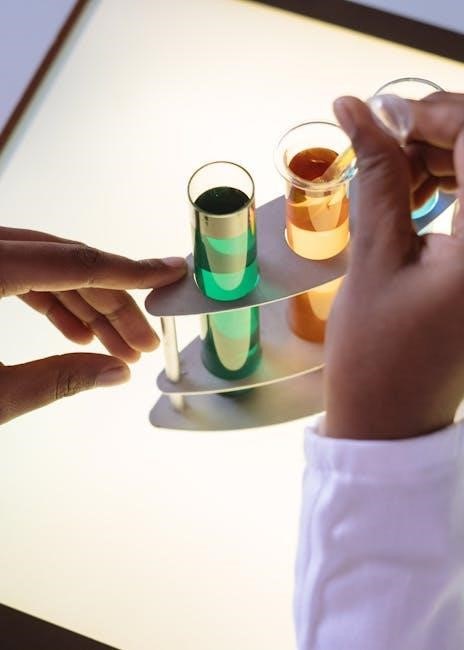biology lab manual
Biology Lab Manual: An Overview
A biology lab manual serves as a crucial guide. It offers hands-on experience with experiments and techniques. The manual covers diverse topics and helps students understand biological principles. It contains guidelines for conducting experiments and writing lab reports.
Biology lab manuals are essential resources for students. These provide a structured approach to hands-on learning. They bridge the gap between theoretical knowledge and practical application. A well-designed manual contains experiments covering various topics. The topics may include cell biology, genetics, and molecular biology. The experiments are intended to reinforce classroom learning. The lab manuals guide students through each experiment step-by-step. They ensure accuracy and safety in the laboratory environment. Furthermore, lab manuals often include pre-lab questions and post-lab analysis. These stimulate critical thinking and problem-solving skills. Lab manuals also provide background information on the scientific concepts. This helps students understand the relevance of the experiments. Ultimately, biology lab manuals play a vital role in science education. They foster a deeper understanding of biological principles. They also encourage scientific inquiry and discovery among students.
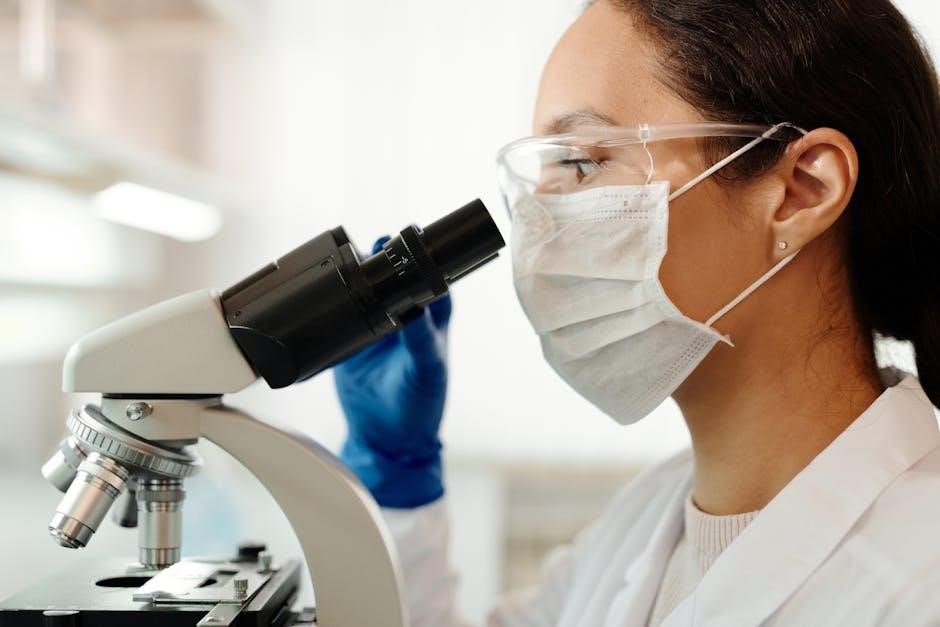
Essential Components of a Biology Lab Manual
A biology lab manual comprises experiment protocols, safety guidelines, and data analysis. These components enhance students’ understanding. They also develop practical skills. Furthermore, they promote critical thinking and scientific inquiry in a structured laboratory setting.
Scientific Method and Experiment Design
The scientific method is a cornerstone of any biology lab manual. It provides a structured approach to investigate natural phenomena. This section guides students through forming hypotheses and designing controlled experiments. It emphasizes the importance of identifying independent and dependent variables. Furthermore, it highlights the need for control groups to ensure accurate data.
Detailed protocols are provided for experiment execution. These protocols outline step-by-step instructions for data collection and analysis. Students learn to record observations systematically and use appropriate statistical tools. They will also use these tools to interpret results. Moreover, the manual covers the importance of minimizing bias. It also focuses on ensuring reproducibility in experimental design.
Emphasis is placed on critical thinking. The manual promotes problem-solving skills. It encourages students to evaluate their findings. It also encourages them to draw logical conclusions based on evidence. This section also includes examples of well-designed experiments. It also includes examples of poorly designed experiments. These help students understand the nuances of scientific inquiry. Ethical considerations in research are also addressed.
Microscopy Techniques
Microscopy techniques are integral to any biology lab manual. This section introduces students to the principles and applications of microscopy. It covers various types of microscopes, including light and electron microscopes. It also discusses the specific techniques used in light microscopy.
Detailed instructions are provided for preparing samples for observation. These instructions include staining procedures and mounting techniques. Students learn how to optimize image quality by adjusting focus and illumination. They also learn how to measure the size of microscopic objects. Moreover, this section covers the proper care and maintenance of microscopes.
Emphasis is placed on understanding the limitations of each type of microscope. It also emphasizes the appropriate applications. Students learn to identify cellular structures and microorganisms. The manual includes exercises involving the observation of different types of cells and tissues. It also includes exercises involving the observation of microorganisms.
This section also includes practical tips. These tips help troubleshoot common problems encountered during microscopy. This enhances students’ proficiency in using these essential tools. It also enhances their skills in scientific investigation.
Cell Biology and Structure
This section of the biology lab manual delves into cell biology and structure. Students explore the fundamental unit of life, the cell. The section covers the structure and function of cellular components. These components include the nucleus, cytoplasm, and various organelles. Emphasis is placed on understanding the roles of each organelle.
Detailed descriptions and illustrations help students visualize cell structures. The manual provides protocols for preparing and observing cell samples. These protocols include staining techniques to highlight specific cell structures. Students learn to identify different types of cells, such as prokaryotic and eukaryotic cells. They also learn to compare plant and animal cells.
The section also covers cell transport mechanisms, including diffusion and osmosis. Experiments demonstrate how molecules move across cell membranes. Students learn about the cell cycle and the processes of mitosis and meiosis. The manual includes exercises that involve observing cell division under a microscope.
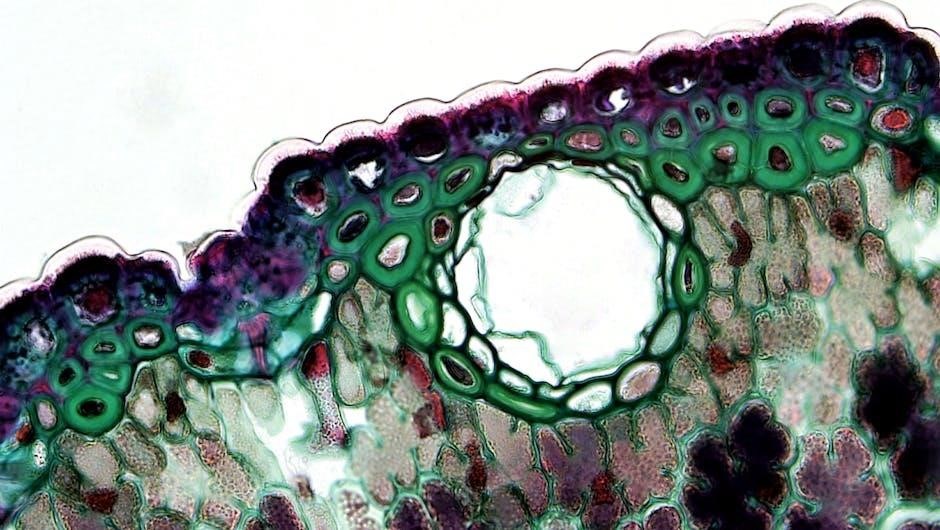
Furthermore, the section addresses cell communication and signaling pathways. This knowledge enables students to grasp cell biology’s complexity and importance. It also prepares them for advanced studies.
Genetics and Inheritance
This section explores genetics and inheritance principles. It provides students with a foundational understanding of heredity. The manual introduces concepts like DNA, genes, and chromosomes. It covers the structure of DNA and its role in encoding genetic information. Students learn about the processes of DNA replication and protein synthesis.
The section includes experiments on Mendelian genetics. These experiments involve studying inheritance patterns in simple organisms. Students learn to construct Punnett squares and predict genotypes and phenotypes. The manual also addresses non-Mendelian inheritance patterns. These patterns include incomplete dominance and codominance.
Students explore the concepts of gene linkage and crossing over. They analyze genetic pedigrees to understand the inheritance of traits. The manual covers mutations and their effects on gene expression. It includes exercises on genetic engineering and biotechnology.
Furthermore, the section delves into population genetics and evolution. It provides a comprehensive overview of genetics and heredity. Students gain practical experience through hands-on experiments and data analysis. This section prepares students for further studies in genetics and related fields.
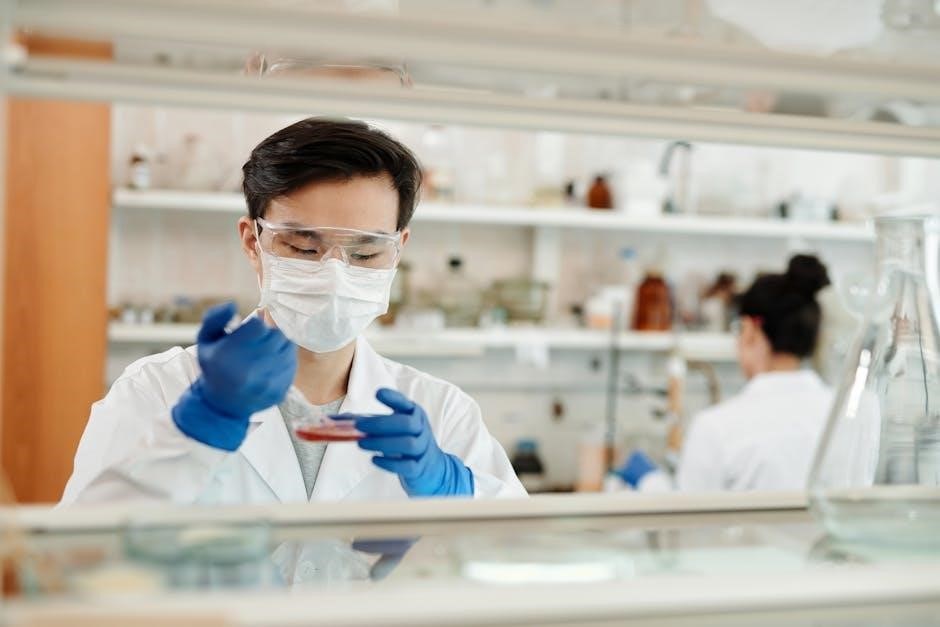
Practical Applications and Exercises
This section provides hands-on exercises. These exercises enhance understanding of biological concepts. Students gain practical skills through experiments. They will apply learned knowledge in real-world scenarios. Exercises cover molecular biology and human anatomy.
Molecular Biology Techniques
Molecular biology techniques are essential for understanding biological processes. A lab manual provides detailed protocols and guidelines. These techniques include DNA extraction and PCR amplification. Restriction enzyme digests allow for DNA manipulation. Gel electrophoresis separates DNA fragments based on size. These methods are vital in various fields. They are used for research and diagnostics. Students will learn hands-on skills. They will gain experience in modern molecular techniques. Transformation introduces foreign DNA into cells. Sequencing determines the exact order of nucleotides. These techniques are essential for studying gene expression. They are also important for genetic engineering. Molecular cloning allows for creating recombinant DNA molecules. These techniques facilitate the study of gene function. They are also used for developing new therapies. A comprehensive understanding of these techniques is essential. This understanding prepares students for future careers. They will be equipped for research and biotechnology. They are also prepared for medicine. This section provides a solid foundation in molecular biology.
Human Anatomy and Physiology Experiments
Human anatomy and physiology experiments offer hands-on learning. They allow students to explore the human body. These experiments cover various organ systems. They include the skeletal, muscular, and nervous systems. Students can study anatomical structures through dissections. Physiological processes can be examined using simulations. Experiments include measuring heart rate and blood pressure. Reflexes and sensory perception can also be tested. Students learn to identify bones and muscles. They can also study the structure of the brain. Observing prepared slides of tissues is also an option. The experiments provide a deeper understanding of body functions. They enhance comprehension of complex physiological concepts. These experiments also develop critical thinking skills. Students learn to collect and analyze data. They can also draw conclusions based on observations. A lab manual provides detailed instructions and safety guidelines. Proper handling of specimens is always emphasized. Students gain practical skills applicable to healthcare. This knowledge is useful for future careers. They are prepared for medicine and related fields. These experiments provide a solid foundation in human biology.
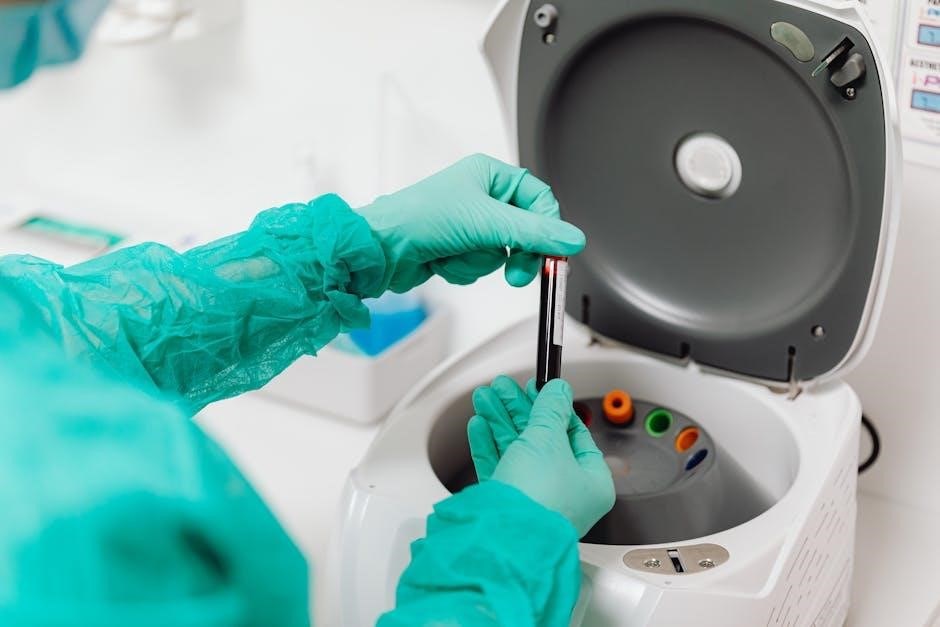
Lab Safety and Protocol
Lab safety and protocol are essential. They ensure a safe learning environment. Guidelines prevent accidents and protect students. Proper disposal of materials is crucial. Understanding safety equipment use is also vital; Following these rules promotes responsible lab practices.
General Safety Guidelines
Adhering to general safety guidelines is paramount in any biology laboratory setting. Always wear appropriate personal protective equipment (PPE), including safety goggles and gloves. Eye protection is crucial to shield against chemical splashes or projectiles. Gloves prevent skin contact with potentially hazardous substances. Familiarize yourself with the location and operation of safety equipment, such as eyewash stations and fire extinguishers.
Never eat, drink, or apply cosmetics in the lab to avoid accidental ingestion or contamination. Keep your workspace clean and organized to prevent accidents. Dispose of waste materials properly in designated containers. Report any spills or accidents to the instructor immediately. Handle chemicals with care, following instructions.
Be aware of potential hazards associated with each experiment. Avoid horseplay or disruptive behavior. Long hair must be tied back to prevent interference with experiments or equipment. Closed-toe shoes are required to protect feet from spills or dropped objects. By following these guidelines, the lab environment can be a safe learning space.
